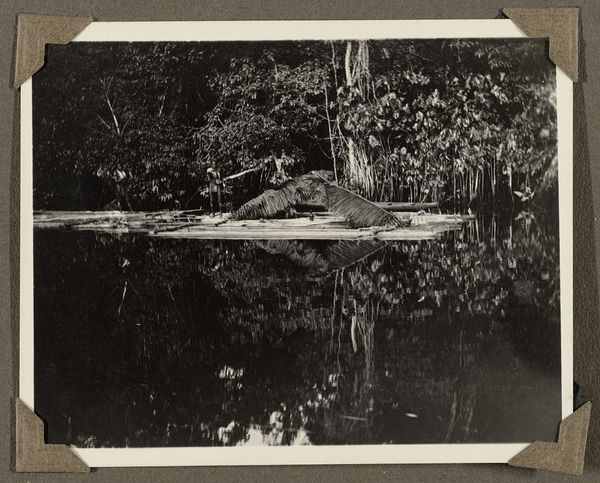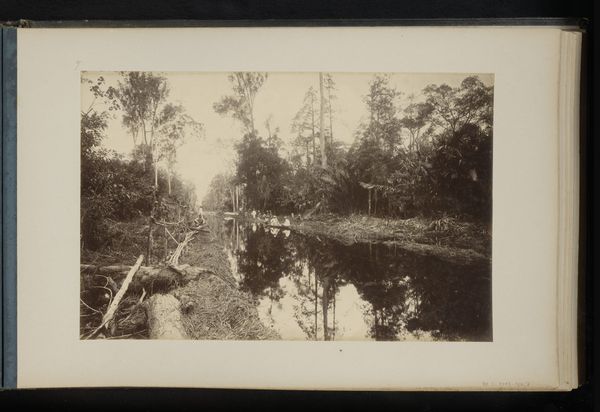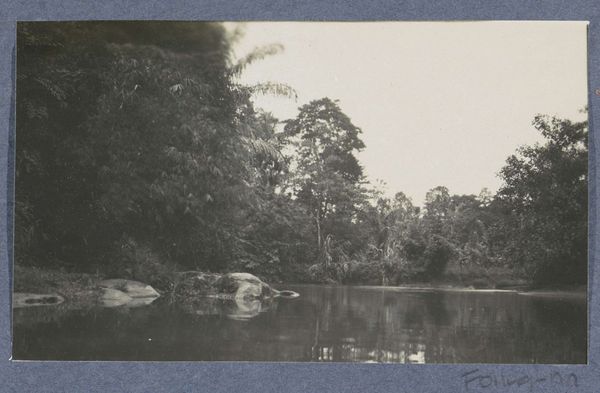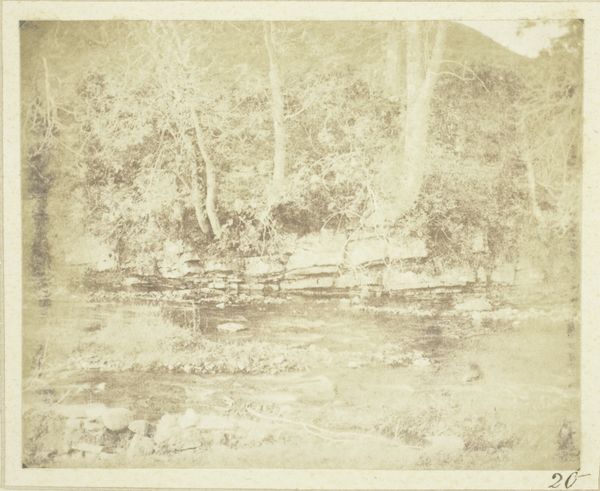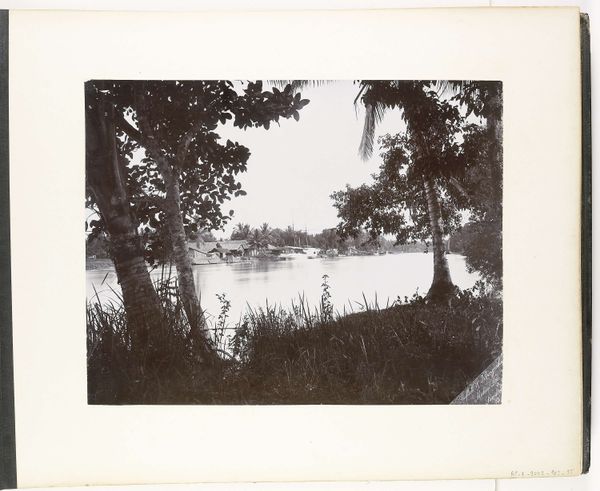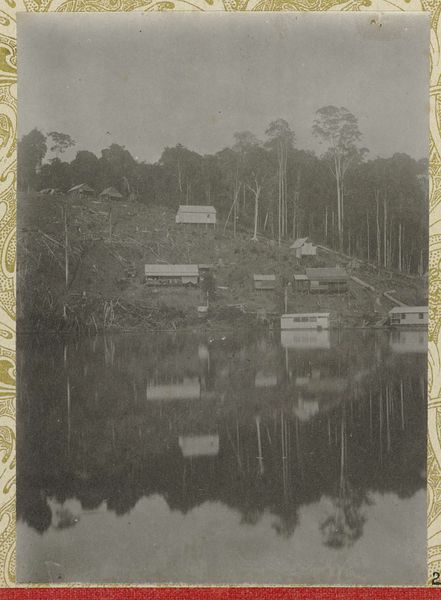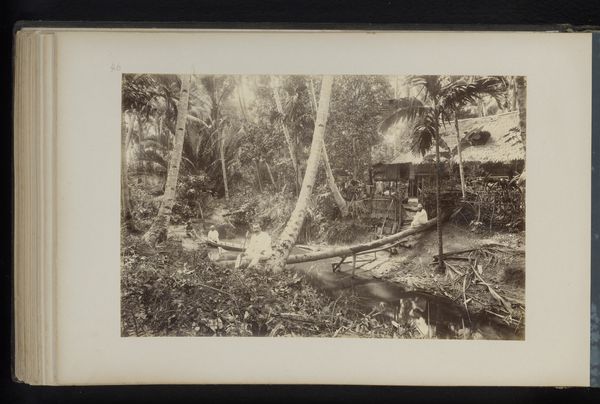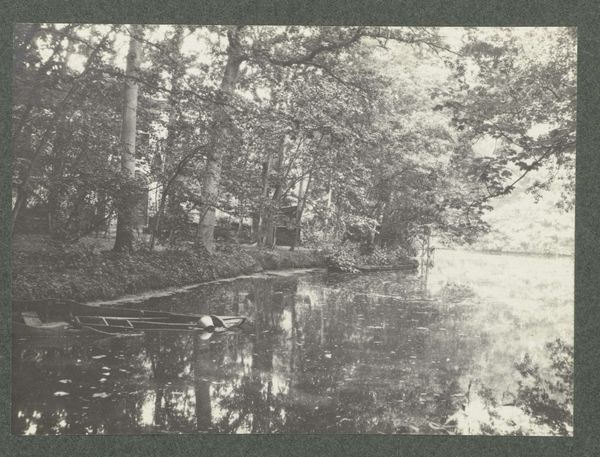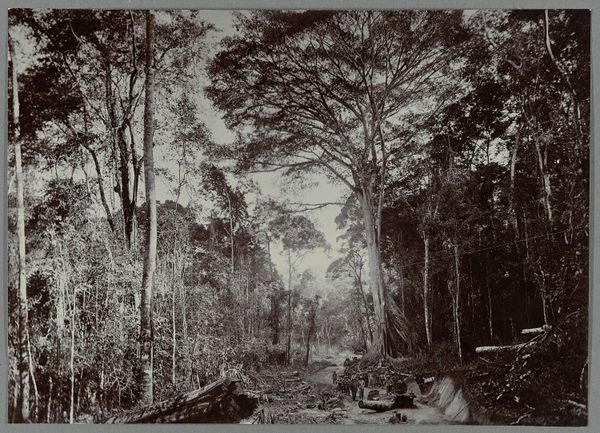
photography
#
landscape
#
street-photography
#
photography
#
realism
Dimensions: height 78 mm, width 98 mm
Copyright: Rijks Museum: Open Domain
Curator: This photograph, titled "Kano's op een rivier in Suriname" which translates to "Canoes on a River in Suriname", dates from between 1925 and 1927. It captures a seemingly serene moment in Suriname, utilizing the photography medium. What strikes you initially? Editor: The reflections. They’re almost perfect mirrors, doubling the density of the jungle foliage. And the subdued tones – greys and blacks – amplify the tranquility, as if all colors have been absorbed into the depths of the river. It projects calmness but has a somewhat melancholic stillness to it. Curator: It is a peaceful composition, and interesting considering the period, it captures a region still grappling with the legacies of colonialism. Images like this contributed to a wider narrative, often romanticized, of the so-called “untouched” landscapes. This one, showing Indigenous modes of river transport, becomes significant. Editor: Precisely, the very geometry adds another layer of consideration to its symbolism, notice how the canoes pierce the mirroring of nature. The trees overhead create a strong horizontal line, but the reflections vertically offset it creating balance and almost an intersection between lived spaces. Do you think the canoes add to the tension or relieve some of the harshness with that softness? Curator: I think their positioning certainly plays a key role. The angle offers a view into the ways the communities existed, utilizing resources on their own terms and against an extractive background imposed upon them. You see evidence of a small timber operation and a river ferry all together, and what story is told of development? Editor: An organic co-existing one. Do you think this reflects the general perception about those peoples, since this photograph feels staged and well-organized, contrary to the colonial perspectives? Curator: That's what makes it an engaging artifact for its historical role: pushing back against dominant perceptions while often inadvertently perpetuating the "exotic" nature of the depicted culture. Editor: So ultimately, this single frame can unlock so many ideas, and it will evolve constantly the more we interpret and reinterpret. Curator: Exactly. That interplay between observation, artistry and a shared history.
Comments
No comments
Be the first to comment and join the conversation on the ultimate creative platform.
